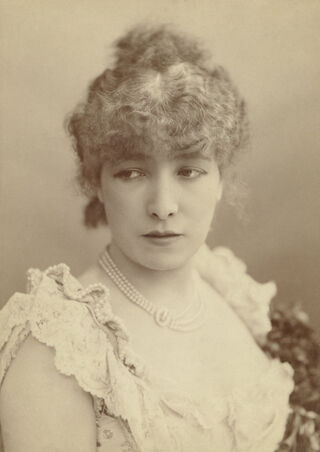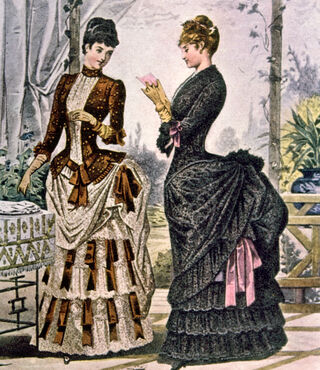ADHD
Neuropsychiatry Through a Pioneer Girl's Eyes
ADHD and neurology in the Laura Ingalls Wilder "Little House" books.
Posted November 30, 2021 Reviewed by Michelle Quirk
Key points
- First published in the 1930s, Laura Ingalls Wilder's books contain information of events that largely happened in the 1880s.
- In those days, children's high energy would likely be perceived as an asset on the family farm as much as it was a liability in the schoolhouse.
- The true cause of Mary’s blindness was likely some sort of meningitis or encephalitis, not scarlet fever.
Sarah has been a lifelong fan of the Laura Ingalls Wilder books (except for the racist parts). Recently reading them with our youngest, she considered them from the perspective of a neurologist and ADHD specialist.
Delirium
There are several illustrations of classic neurologic issues in the books. First, in Little House on the Prairie,1 there is an example of delirium when the family all comes down with fevers due to malaria. Delirium is a waxing and waning alteration of consciousness that has many different causes—fever and infection in this case, along with possible dehydration—and leads people to have difficulty perceiving and responding appropriately to their environment. In the book, various members of the Ingalls family with delirium had a hard time walking, Laura’s vision became distorted, and they experienced emotional disturbances and confusion.
Blindness
The most well-known neurologic issue in the books is when Mary goes blind. This is attributed in By the Shores of Silver Lake2 to scarlet fever. After reading this, Sarah was probably not the first person to get to medical school thinking that scarlet fever could cause blindness—but, actually, this is unlikely. The true cause of Mary’s blindness was likely some sort of meningitis or encephalitis. Meningitis is an infection of the meninges (the tissues that cover the brain); encephalitis refers to an infection of the brain itself.

Meningitis and encephalitis can be bacterial, viral, or fungal. Our guess (and we will never know) is that Mary, who had a stroke and bilateral blindness, did not have bacterial meningitis because bacterial meningitis rarely causes bilateral blindness. It’s possible she could have contracted fungal meningitis (e.g., from Cryptococcus) from the soil. Or her encephalitis could have been a latent manifestation of a previous measles infection. Back in the days before vaccination, this consequence of measles (called subacute sclerosing panencephalitis) was common. It was an awful and unpredictable long-term result of measles infection that could result in strokes and blindness as Mary had.
Paralysis
Another classic neurologic issue in the books is whatever felled Almanzo Wilder in the first years of married life.3 He and Laura both had diphtheria, and after that infection, he developed bilateral paralysis, primarily of his legs. This has been attributed to a stroke,8 but a stroke would have been much more likely to cause weakness just on one side of his body. It’s more likely he had an autoimmune reaction to the diphtheria infection.
While diphtheria can generate a specific autoimmune reaction that can cause paralysis involving muscles controlling breathing and eating, we know it wasn’t that particular reaction because Almanzo’s symptoms were different. More likely, the diphtheria generated a less-specific response: Guillain Barre Syndrome. This is a syndrome, triggered not only by diphtheria but also by other bacteria and viruses, that causes paralysis of both legs (more than the arms) and is often reversible; Almanzo improved but never fully recovered.
These days, due to vaccines (Thank you science!) that protect against diphtheria, Guillain Barre resulting from diphtheria infection is practically nonexistent. The most common cause of Guillain Barre these days is Campylobacter jejuni, a bacterium found in undercooked chicken, but also associated with other types of animal contact and with ingestion of contaminated water.

ADHD
Relevant to this blog, one can also look at Laura Ingalls Wilder’s books from the perspective of our modern take on ADHD. ADHD was not diagnosed during the 1870s and 1880s. It may have first been mentioned in the medical literature a hundred years earlier, and there was a series of children’s books in the 1840s that involved characters with ADHD symptoms (Fidgety Phil and Johnny Look in the Air).4 However, ADHD (or more accurately its alternately named precursors) didn’t enter the mainstream medical literature until after the next century began.
There have been many theories about why the diagnosis of ADHD emerged in the 1900s and has exploded in the last half-century. Part of this likely has to do with electronics and a faster pace of life that wasn’t around in earlier days. In the days Laura Ingalls Wilder wrote about, schools were of course entirely different. In the 1880s period primarily covered by the Little House books, education was not emphasized by most American families. Children were often kept home as parents needed them to work on the farm (as detailed in Farmer Boy5). The school year was much shorter (132 days), and average school attendance was only about 78 days per year (the absence rate was 59 percent).6
School rooms also had plenty of distractions. The one-room schoolhouse of yesteryear was typically a shanty overcrowded with pupils of various grades. It was often miserably cold—or miserably hot. Students often sat two to a desk, sometimes sharing a book so that one student read in the first part while another more advanced student simultaneously read lessons in the later pages of the book, simultaneously.
School days were long. You got whipped if you didn’t sit still or learn on schedule, or if you misbehaved in any way such as talking out of turn. Learning consisted of reading and memorizing from a book and answering questions about what you read. Children ill-suited to this type of educational environment would often simply stay at home and work on the farm (or play hooky and go fishing if they could). Certainly, their high energy would be perceived as an asset on the family farm as much as it was a clear liability in the schoolhouse.
Of course, in those days, kids didn’t just roll out of bed, pile into a car, and get dropped off at school. They worked off some energy early each morning doing chores and walking (sometimes several miles) before they even sat down in the schoolhouse. And they did not spend their “free time” on screens. If they weren’t studying (reading, writing, or learning math) they were outside and often doing chores. They did not stay up late. In the days before electric lights, most people went to bed shortly after it got dark, especially out in the countryside.
Other aspects of the structure of life in those days may also have contributed to less visible ADHD. Children were given a lot of personal responsibility for important tasks (e.g., taking the horses and cows to pasture and bringing them back in On the Banks of Plum Creek7 and By the Shores of Silver Lake2 starting when Laura was about 9 years old, and logging in the woods for Almanzo also at age 9 in Farmer Boy5). These tasks were important and had immediate consequences; they were crucial to the survival of the whole family. ADHD or not, we all pay better attention when we have a sense that the work we are doing is important and meaningful (let alone vital), and if we feel that we have personal responsibility for its completion.
Now, not to romanticize it: Children in those days got significantly injured at times. It was a hard, rugged existence: Death from injury or illness was common for both adults and children. Sometimes children were given too much responsibility—but it’s possible that an aspect of modern child-rearing that contributes to increasing rates of ADHD in children could be a lack of personal responsibility for chores and preoccupation with tasks (including schoolwork, not to mention screen time) that don’t have consequences to the child or the family. We do recommend considering this when parenting ADHD children; giving them tasks (i.e., chores) to accomplish where outcomes are both obvious and important and making them responsible for what they accomplish can be a useful behavioral approach to learning skills to cope with ADHD, not just in childhood, but over a lifetime.
What will people looking back on us in the 2080s think about how we are doing with raising our kids, and how we diagnose and manage ADHD? Check out our blog again then—we hope to find out!
References
1. Ingalls Wilder, L., Little House on the Prairie.
2. Ingalls Wilder, L., By the Shores of Silver Lake.
3. Ingalls Wilder, L., The First Four Years.
4. Lange, K. W. et al., The history of attention deficit hyperactivity disorder. Attention Deficit Hyperactivity Disorder. 2010; 2(4): 241–255.
5. Ingalls Wilder, L., Farmer Boy.
7. Ingalls Wilder, L., On the Banks of Plum Creek.
8. Fraser, C. Prairie Fires: the American Dreams of Laura Ingalls Wilder.




